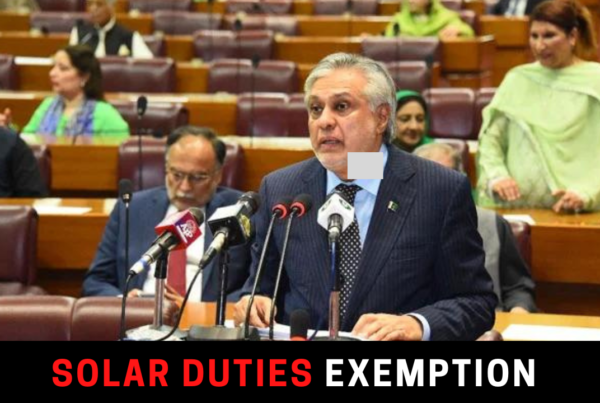Where does Pakistan stand on a Global Solar Atlas? Estimates that suggest tentative energy production and cost of energy of off-grid/grid-connected photovoltaic (PV) energy systems throughout the world involve high uncertainity. Accurate Solar Resource Assessment allows homeowners, small building owners, installers and manufacturers to easily develop better estimates of the performance (Return on Investment) of potential PV installations.
Alternate Energy Development Board (AEDB) is working for the development of Renewable Energy Technologies in the country. In recognition of utter importance of aquisiton of empirical data, AEDB has recently decided to approach all the stakeholders involved in using, facilitating, or providing equipment or services in any sector of renewable energy (solar energy, micro and mini hydro power, biomass) to provide data to support in developing the data base. Since information on the status of RE installations in Pakistan was not available, AEDB has taken the strategic decision to establish the RE installation database. This database will be used for assessing how much RE installation in happening, yearly growth of RE sector, increase in utilization of REs in different application and monitoring of impacts from relevant RE policies as well as for dissemination of information on the status of RE applications in Pakistan.
Related: Invest in Solar PV System
Alternate Energy Development Board, in partnership with the The World Bank, has also started focusing on a series of new solar maps for Pakistan in support of the efforts to increase the deployment of renewable energy in Pakistan. Data repository for measurements from 9 automated solar stations in Pakistan. The solar maps, and the underlying solar data, can be accessed for free via the Global Solar Atlas, a recently-launched tool provided by the World Bank Group and covering all countries. In addition, the maps are available in digital format for use in Geographic Information System (GIS) applications and Google Earth. This way, Pakistan joins a small group of mainly developed countries, having access to duly validated and high quality solar energy maps available for planning and prospecting purposes. This initiative will facilitate investors in making more informed project decisions.
In implementation of China Pakistan Economic Corridor, it is imperative that the country grows inbound and outbound inviting other more developed countries to play their part. In such scenario, Pakistan has become the first country advantaged with validated solar maps under a global initiative on renewable energy resource mapping led by the Energy Sector Management Assistance Program (ESMAP), a multi-donor trust fund administered by the World Bank. The new solar maps for Pakistan were unveiled at a workshop hosted by AEDB and the World Bank in Islamabad, which was attended by a cross section of stakeholders including Pakistan Renewable Energy Society.
These new solar maps will definitely ensure qualified improvement vis-a-vis previous studies, and will underscore the tremendous solar-wind hybrid potential that exists across Pakistan – Muhammad Ali Qureshi, Project Development Officer, Sapphire Renewables Limited
With these efforts, The World Bank project on solar mapping in Pakistan included field data, which is being generated by nine solar measurement stations installed two years ago throughout the country. The project supports AEDB’s efforts to harness renewable energy in all the provinces by improving access to bankable data. The solar maps used the latest solar resource modeling techniques, based on 18 years of satellite and global atmospheric data from 1999-2016. Impressed by the massive advantage occuring to these existing facilites like National University of Science and Technology and The World Bank coming in to pitch their part:
NUST is definitely taking the lead in research and innovation towards the massive future of the renewable energy industry in Pakistan. They have invested millions of dollars in the right areas and are going to benefit for the years to come. – Mr. Jahanzeb Tariq, Executive Solar Operations at Mavetech Pvt Ltd
In addition to presenting and discussing the new maps, participants learned about the ground-based measurement campaign, and discussed various options for continued operation of the nine solar measurement stations installed at diverse locations in Pakistan. The maps much like Global Solar Atlas will help large solar power projects in obtaining commercial financing by reducing the resource risk. Data will be uploaded in batches, on a monthly basis, and will transmit daily reports on 10 minute average values for solar radiation levels, temperature, air pressure and wind speed. There are typically three modes of dispatch of such information: i) Donor hired Foriegn consultants/servicing will maintain the operations of data logging systems, ii) Local Servicing companies or Institute such as Pakistan Council of Research and Tehcnology, or iii) University management from intitutes where this system is being operated from. This will help in expanding access to sustainable and affordable sources of indigenous energy in Pakistan. The following useful links will always be of help:







